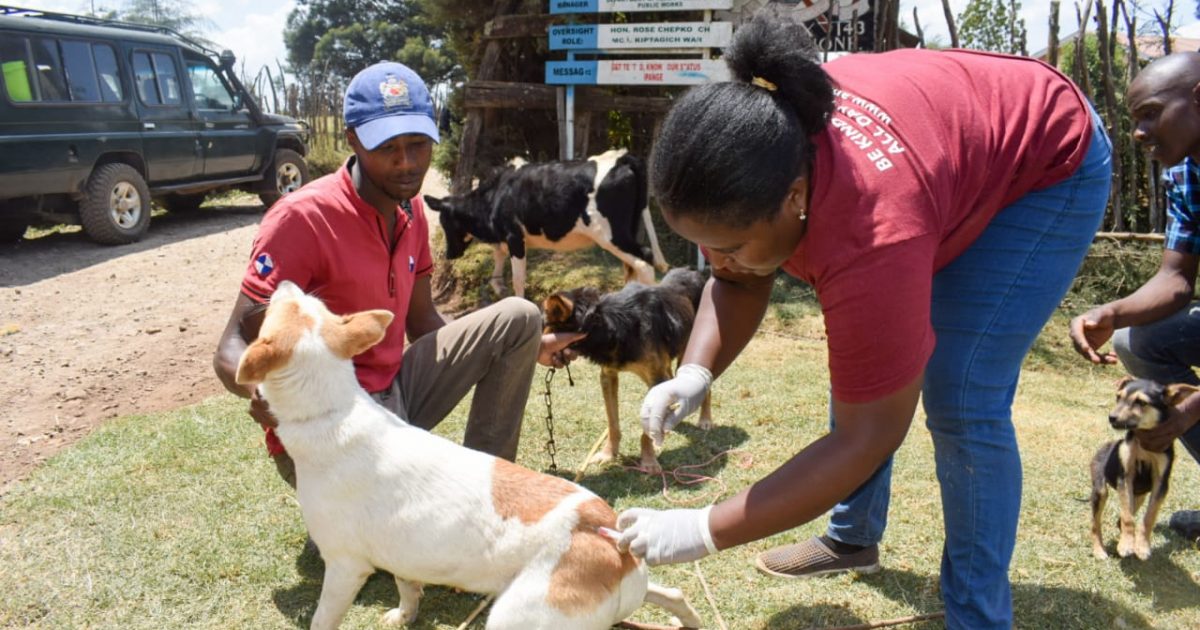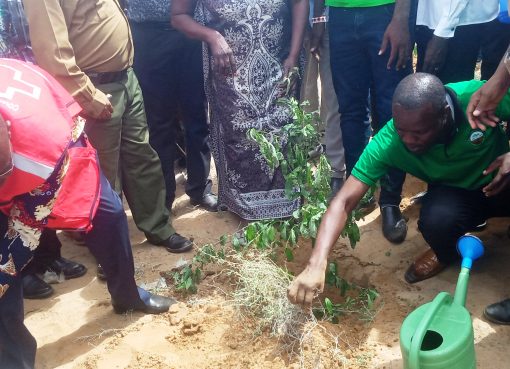The County Government of Nakuru has begun a mass vaccination of dogs, cats and donkeys to curb the spread of rabies in the devolved unit.
The vaccination drive which is a joint venture between the County administration and Africa Network for Animal Welfare (ANAW) further targets to vaccinate 42,000 cattle against foot and mouth disease (FMD).
Foot-and-mouth disease (FMD) or hoof-and-mouth disease (HMD) is an infectious and sometimes fatal viral disease that affects cloven-hoofed domestic and wild animals.
County Chief Officer in charge of Veterinary Services Dr Michael Cheruiyot said that they are also seeking to educate members of the public on managing dogs to reduce cases of bites.
“We are raising awareness so that members of the public take ownership of the dogs. We are also working to have male dogs castrated and the reproductive system surgically removed from the female dogs to control their population,” said Dr Cheruiyot.
Speaking in Kiptagich ward, within Kuresoi South Sub- County when he launched the exercise, Dr Cheruiyot cautioned members of the public to be vigilant and report any cases of the disease and any stray dog bites immediately for action.
In the recent past cases of rabies have been reported in Tachasis village in Kiptagich ward, Kuresoi South.
The Chief Officer explained that besides rabies, dogs can spread a range of other disease-causing organisms, including salmonella. He added that there is also Toxocara canis, a parasite that can cause blindness to humans.
“To protect dogs from diseases, dog owners should keep up with vaccination routines. With vaccination, one can prevent diseases like rabies, worms, bordetella, Lyme disease, parvovirus, leptospirosis and distemper,” noted Dr Cheruiyot.
Rabies is caused by a virus that is nearly always transmitted to humans through bites and scratches from rabid animals.
Without appropriate intervention to prevent the development of clinical disease, rabies is 100 percent fatal.
In Kenya, an estimated 2,000 people die annually of rabies due to bites from rabid dogs. Africa accounts for 36 per cent of the 59,000 rabies deaths in humans annually.
According to the World Health Organization and the World Animal Protection, by 2020, Kenya was recording up to 75,000 dog bites every year. Out of these, 500 to 1,000 dog bites resulted in death.
Globally, the World Organization for Animal Health estimates that about 59,000 lives are lost to rabies every year. About 40 per cent of these victims are children, the majority of whom are in underdeveloped countries.
Currently, researchers estimate that more than 1 million people will die from rabies globally between 2020 and 2035 if vaccination rates and immediate treatment for dog bites are not scaled upwards.
Dr Cheruiyot indicated that mass dog vaccinations covering 70 per cent of the dog population are a cost-effective way to break dog-to-dog rabies transmission, in addition to human inoculation.
He advised dog bite victims to immediately wash the wound with clean running water for at least 15 minutes and visit a health facility to receive the full dose of the recommended five post-exposure vaccines.
“From the first day of the dog bite, the anti-rabies injections are normally given on the first, third, seventh, 14th and 28th day after exposure. After a dog bite, it is a race against time to prevent the virus from travelling from the bite wound to the brain of the patient, a stage of the disease that has no known cure, and death follows, with the most horrifying symptoms,” the Chief Officer pointed out.
Dr Cheruiyot stated that the County Government was educating communities on rabies and enhancing capacity for health workers with regard to rabies exposure assessment, diagnosis, administration and judicious use of the rabies vaccines.
He added that his department had tightened surveillance, risk assessment and reporting compliance to make data available.
A majority of rabies deaths are in children because they are more likely to play with dogs, and, when bitten, tend not to report to their parents for action.
In 2014, Kenya adopted a strategic plan for eliminating human rabies, in line with the global target of eliminating dog-mediated human rabies by 2030.
Dr Cheruiyot also urged all residents of Nakuru to ensure that all meat offered for consumption is slaughtered in the approved slaughterhouses, duly inspected, stamped and transported in strict compliance with the Ministry of Health’s regulations.
“Low dog vaccination coverage often results from lack of information on the proportion of dogs inoculated during mass vaccination campaigns and logistical challenges. Poor knowledge on disease transmission and prevention however remains the main challenge,” explained the Chief Officer.
Dr Cheruiyot revealed that the vaccination of cattle aims to protect farmers from losing their animals.
“I urge farmers in the county to heed the call for free vaccinations in their respective sub-counties. The activity is all-inclusive and will cover all intended sub-counties. The county is targeting to vaccinate at least 6,000 cattle,” Dr Cheruiyot said.
“We will also launch a vaccination drive for sheep and goats in the coming days.”
At least 70 per cent of the total land acreage in Nakuru is agriculturally productive, with a large capacity for livestock, goats, sheep production.
By Anne Mwale





